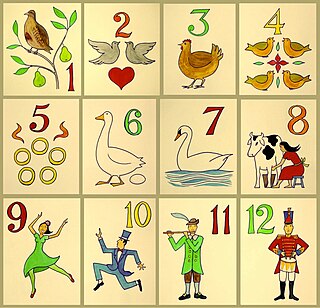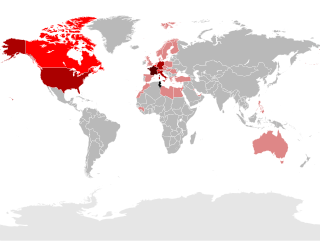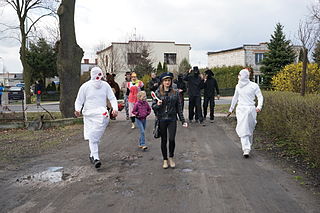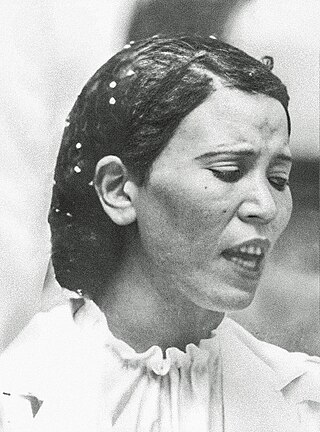Related Research Articles

Tunisia, officially the Republic of Tunisia, is the northernmost country in Africa. It is a part of the Maghreb region of North Africa, bordered by Algeria to the west and southwest, Libya to the southeast, and the Mediterranean Sea to the north and east. Tunisia also shares maritime borders with Italy through the islands of Sicily and Sardinia to the north and Malta to the east. It features the archaeological sites of Carthage dating back to the 9th century BC, as well as the Great Mosque of Kairouan. Known for its ancient architecture, souks, and blue coasts, it covers 163,610 km2 (63,170 sq mi), and has a population of 12.1 million. It contains the eastern end of the Atlas Mountains and the northern reaches of the Sahara desert; much of its remaining territory is arable land. Its 1,300 km (810 mi) of coastline includes the African conjunction of the western and eastern parts of the Mediterranean Basin. Tunisia is home to Africa's northernmost point, Cape Angela. Located on the northeastern coast, Tunis is the capital and largest city of the country, which is itself named after Tunis. The official language of Tunisia is Modern Standard Arabic. The vast majority of Tunisia's population is Arab and Muslim. Vernacular Tunisian Arabic is the most spoken, and French also serves as an administrative and educational language in some contexts, but it has no official status.

The Dogon are an ethnic group indigenous to the central plateau region of Mali, in West Africa, south of the Niger bend, near the city of Bandiagara, and in Burkina Faso. The population numbers between 400,000 and 800,000. They speak the Dogon languages, which are considered to constitute an independent branch of the Niger–Congo language family, meaning that they are not closely related to any other languages.

Marzanna, Morė, Marena, Mara, Morana, Morena or Mora is a pagan Slavic goddess associated with seasonal rites based on the idea of death and rebirth of nature. She is an ancient goddess associated with winter's death, rebirth and dreams. In ancient Slavic rites, the death of the Goddess Morana at the end of winter becomes the rebirth of Spring of the Goddess Kostroma (Russian), Lada or Vesna representing the coming of Spring.

The flag of Tunisia is a rectangular panel of red color with an aspect ratio of 2:3. In the center of the cloth in a white circle is placed a red crescent, surrounding a red five-pointed star on three sides. The Tunisian Bey Hussein II decided to create a flag for Tunisia, close in appearance to the modern one, after the Battle of Navarino on 20 October 1827; in 1831 he was officially approved. In that form, the flag existed during the French protectorate, and on 1 June 1959, it was proclaimed the state flag of the Republic of Tunisia. On 30 June 1999, the proportions and design of the flag were clarified by a special law. The general appearance of the flag remained virtually unchanged.

Tunisian culture is a product of more than three thousand years of history and an important multi-ethnic influx. Ancient Tunisia was a major civilization crossing through history; different cultures, civilizations and multiple successive dynasties contributed to the culture of the country over centuries with varying degrees of influence. Among these cultures were the Carthaginian – their native civilization, Roman, Vandal, Jewish, Christian, Arab, Islamic, Turkish, and French, in addition to native Amazigh. This unique mixture of cultures made Tunisia, with its strategic geographical location in the Mediterranean, the core of several civilizations of Mare Nostrum.

A cumulative song is a song with a simple verse structure modified by progressive addition so that each verse is longer than the verse before. Cumulative songs are popular for group singing, in part because they require relatively little memorization of lyrics, and because remembering the previous verse to concatenate it to form the current verse can become a kind of game.

The Tunisian Football Federation is the governing body of football in Tunisia. It established on 29 March 1957. It became a member in the FIFA in 1960, and in the same year it also became a member of CAF association. The federation also joined the UAFA in 1976 and the UNAF in 2005.

Tunisians are the citizens and nationals of Tunisia in North Africa, who speak Tunisian Arabic and share a common Tunisian culture and identity. In addition to the approximately 12 million residents in Tunisia, a Tunisian diaspora has been established with modern migration, particularly in Western Europe, namely France, Italy and Germany. The vast majority of Tunisians identify as Arabs who adhere to Sunni Islam.

Saber Rebai is a Tunisian singer, actor, and composer. He is known for his song "Sidi Mansour". Some albums carry the variant transliteration Saber el Rebaii. He is one of the most well-known artists in the Arab world.
The mass media in Tunisia is an economic sector. Under the authoritarian regimes of Habib Bourguiba, and then Zine el-Abidine Ben Ali, it saw periods of liberalization and then challenges, notably due to Tunisian censorship. The 2010-2011 Tunisian protests and the subsequent change in government may bring significant change in this domain.

Sonia M'barek is a Tunisian singer of classical Arabic music and related genres. She was Minister of Culture from January to August 2016.

Siwki or Siwek is a regional tradition rooted in Polish folklore, in which a procession of dressed up individuals stops passers-by and performs tricks on them. The event usually takes place on Easter Sunday or Easter Monday.

Leyla Bouzid, is a Tunisian screenwriter and film director.

Abdeljelil Zaouche was a Tunisian politician, reformer, and campaigner in the Tunisian independence movement.
The Tunisian Association of Democratic Women is a Tunisian feminist association which was founded in 1989.

Saliha was a Tunisian singer. Her birth name was Salouha Ben Ibrahim Ben Abdelhafidh.

Hassiba Rochdi or Hassiba Rochdy, born Zohra Bent Ahmed Ben Haj Abdennebi, was born in approximately 1918 in Joumine and died on September 26, 2012, in La Soukra. She was the first renowned Tunisian singer in Egypt and the first Tunisian actress to play a leading role in Egyptian films.

The Établissement de la Télévision Tunisienne is Tunisia's national state-owned public service television broadcaster. The company was established by the country's president Zine El Abidine Ben Ali in August 2007, by dividing the country's former state broadcaster ERTT into separate companies for radio and television. Tunisian television operates two nationwide television channels and is an active member of the European Broadcasting Union (EBU) and the Arab States Broadcasting Union (ABSU).
The story of the Princess Arab-Zandīq or The Story of ‘Arab-Zandīq is a modern Egyptian folktale collected in the late 19th century by Guillaume Spitta Bey. It is related to the theme of the calumniated wife and classified in the international Aarne-Thompson-Uther Index as type ATU 707, "The Three Golden Children".

The Mysteries of Osiris, also known as Osirism, were religious festivities celebrated in ancient Egypt to commemorate the murder and regeneration of Osiris. The course of the ceremonies is attested by various written sources, but the most important document is the Ritual of the Mysteries of Osiris in the Month of Khoiak, a compilation of Middle Kingdom texts engraved during the Ptolemaic period in an upper chapel of the Temple of Dendera. In Egyptian religion, the sacred and the secret are intimately linked. As a result, ritual practices were beyond the reach of the uninitiated, as they were reserved for the priests, the only ones authorised to enter the divine sanctuaries. The most unfathomable theological mystery, the most solemnly precautionary, is the remains of Osiris. According to the Osirian myth, this mummy is kept deep in the Duat, the subterranean world of the dead. Every night, during his nocturnal journey, Ra, the solar god, came there to regenerate by temporarily uniting with Osiris in the form of a single soul.
References
- ↑ AZIZA Mohamed (1975). Les formes traditionnelles du spectacle (in French). Société Tunisienne de Diffusion.
- ↑ "Ommek Tangou". 19 June 2021.
- ↑ Rezgui, Sadok (1989). Les chants tunisiens. Maison tunisienne de l'édition, Tunis.